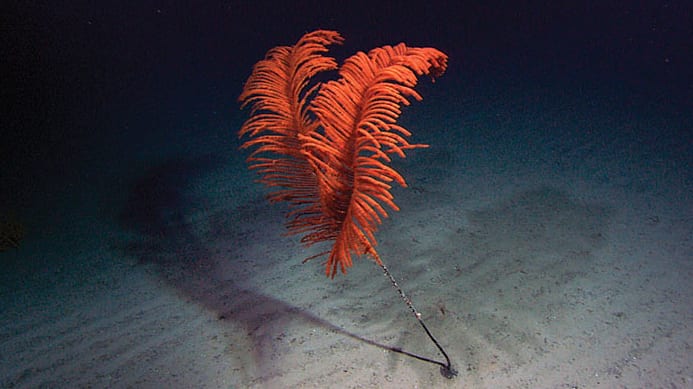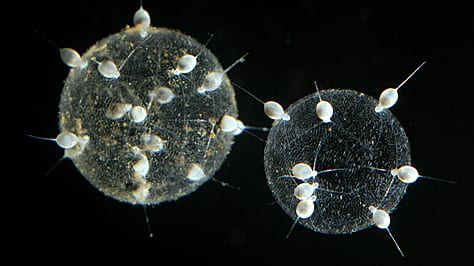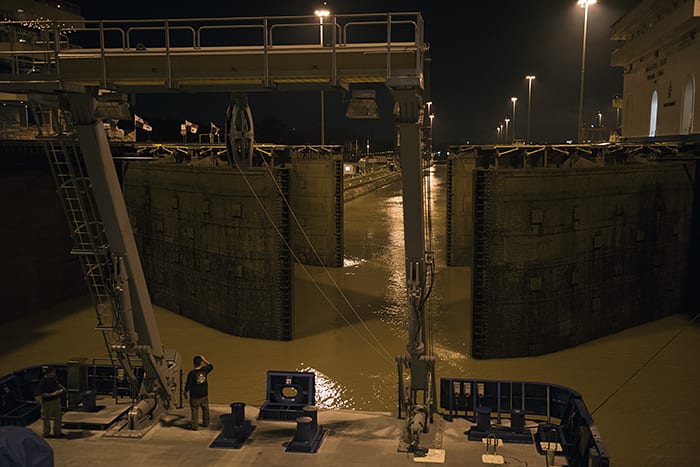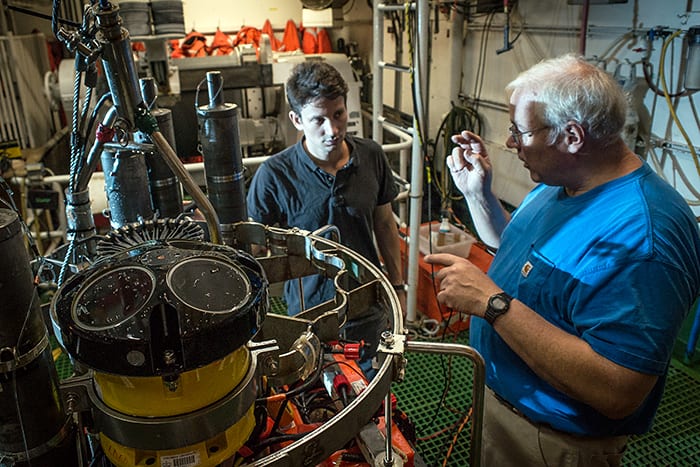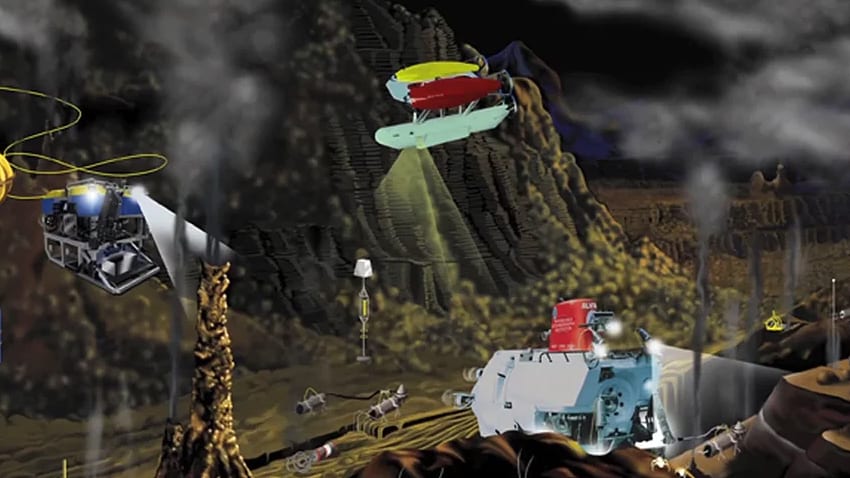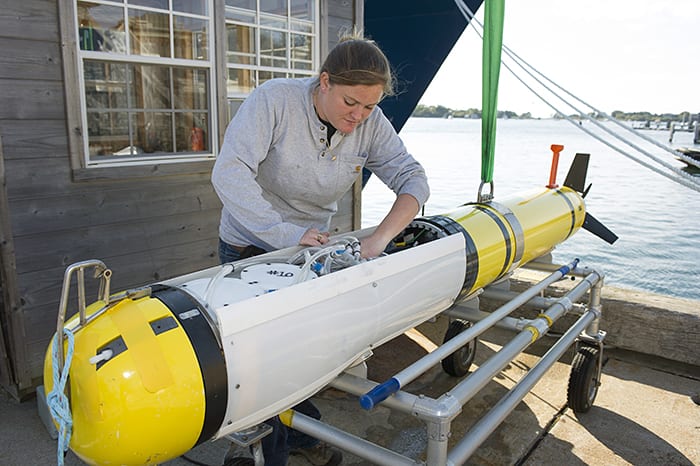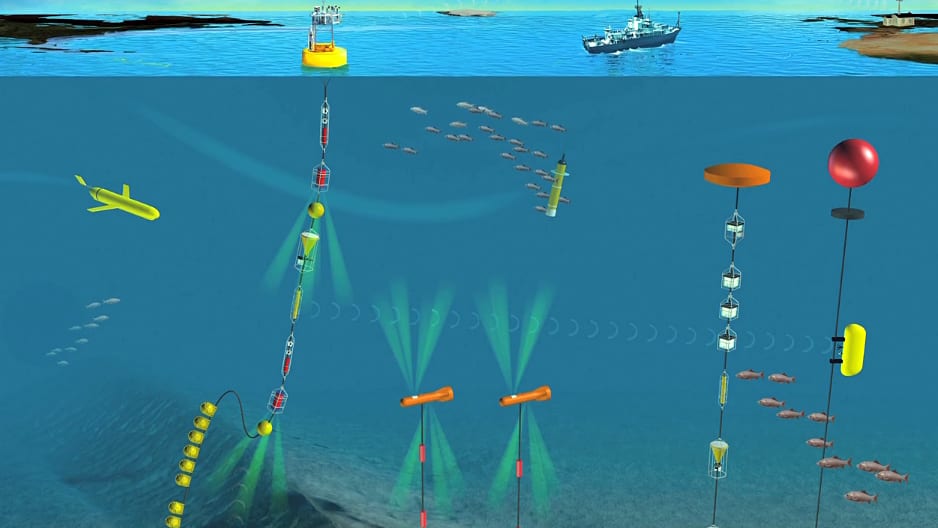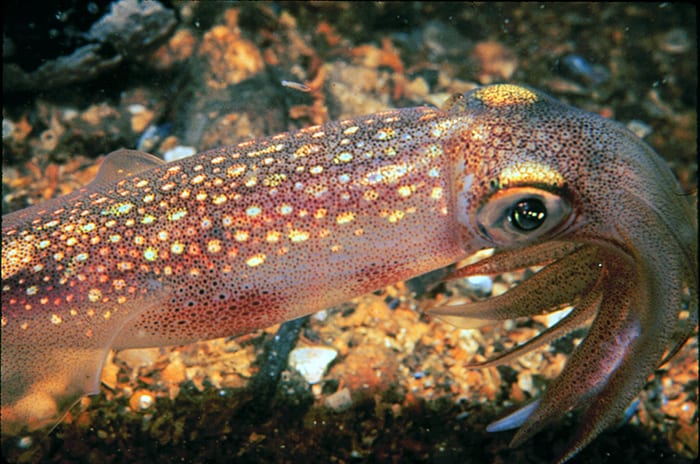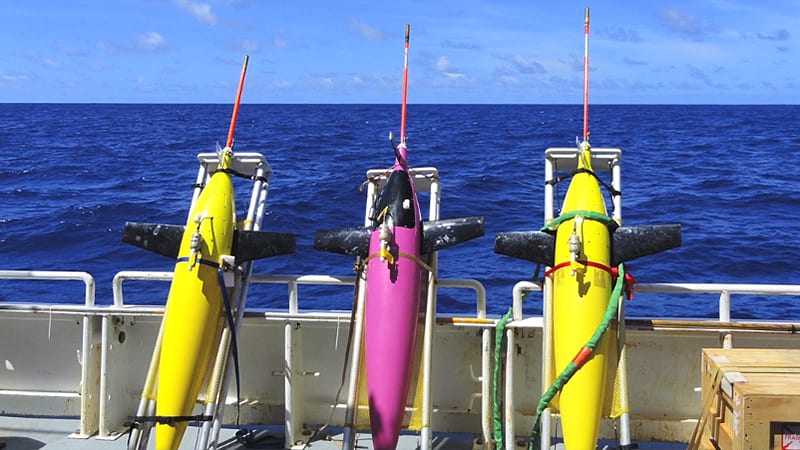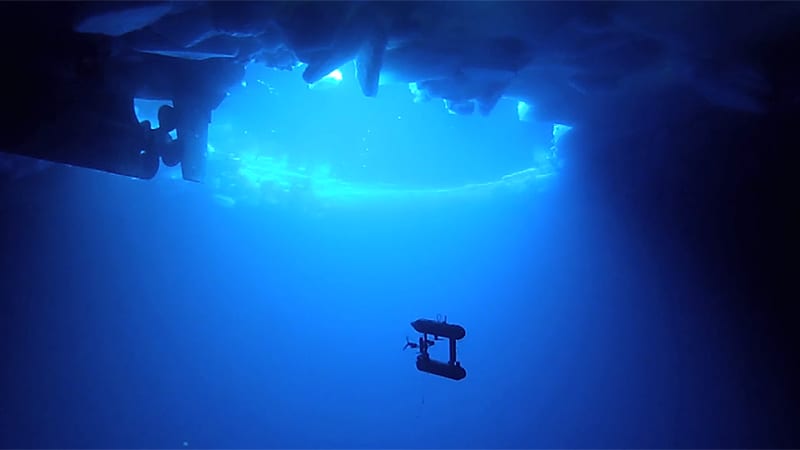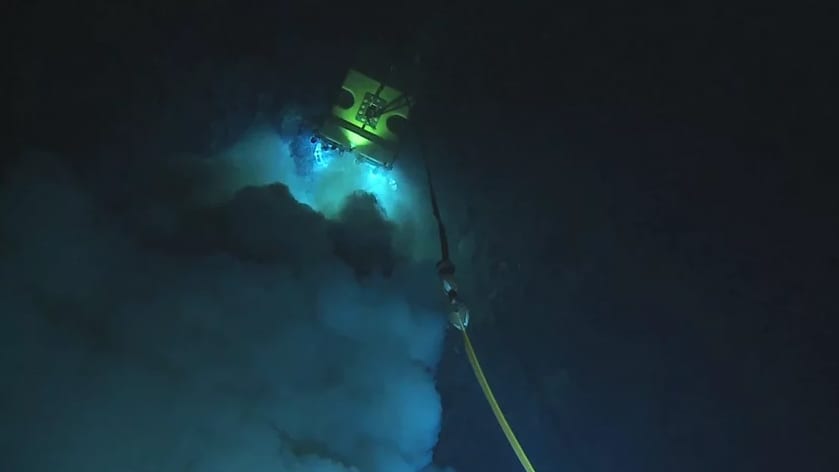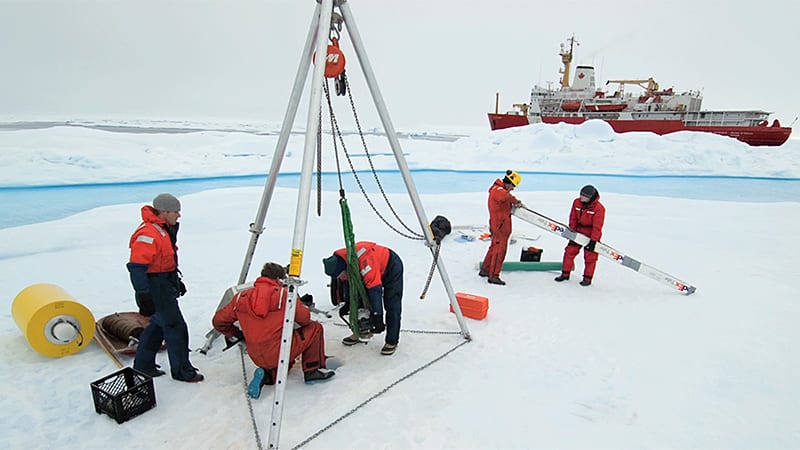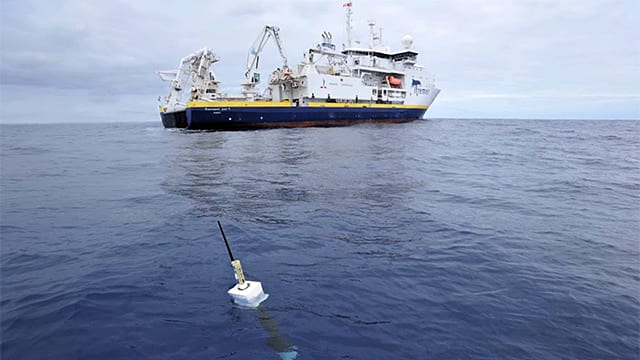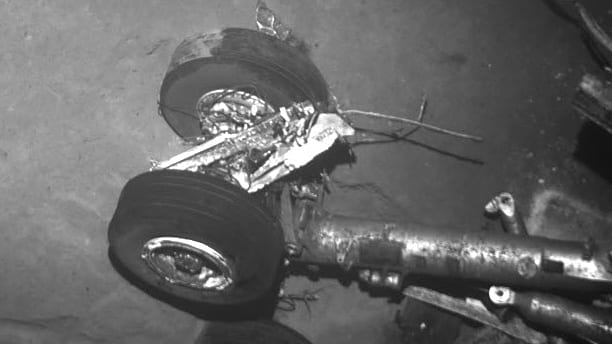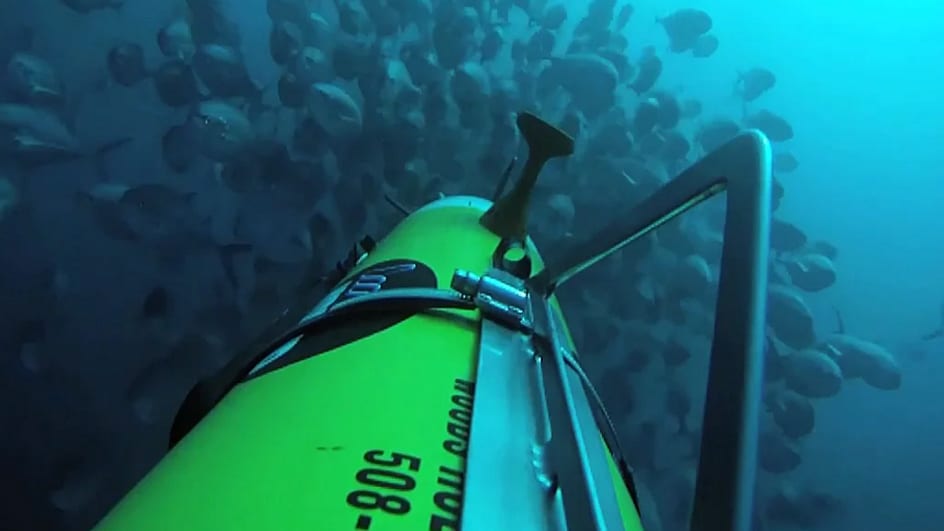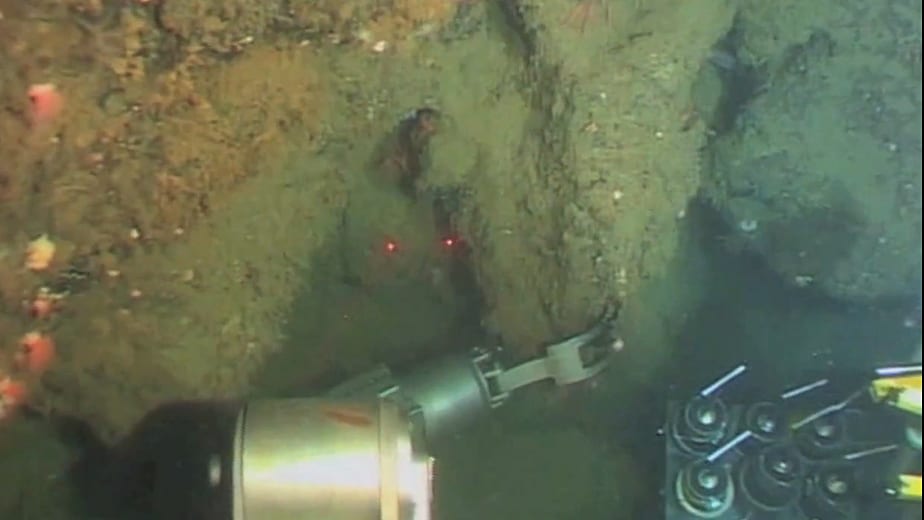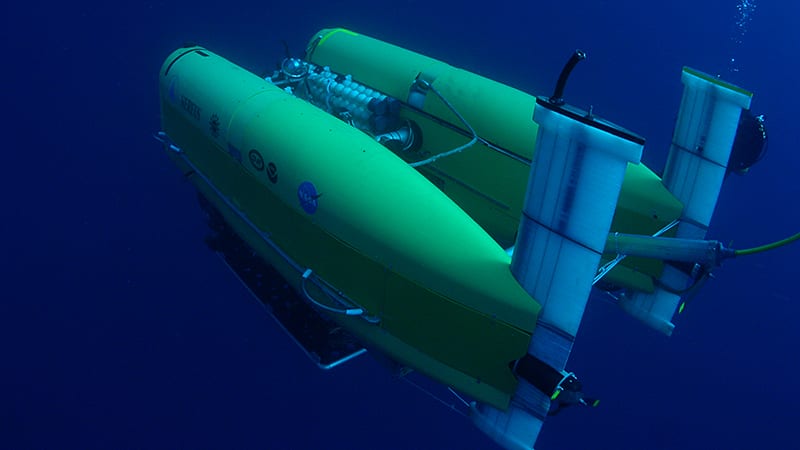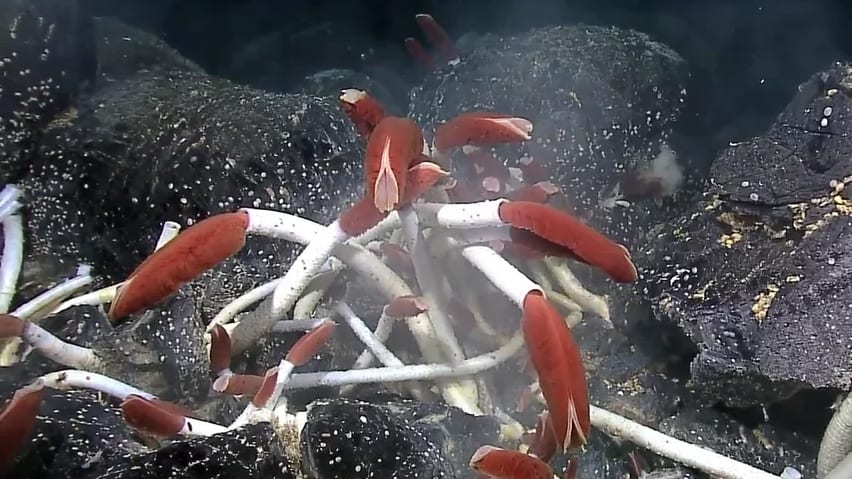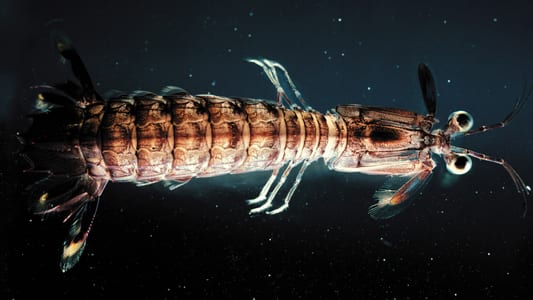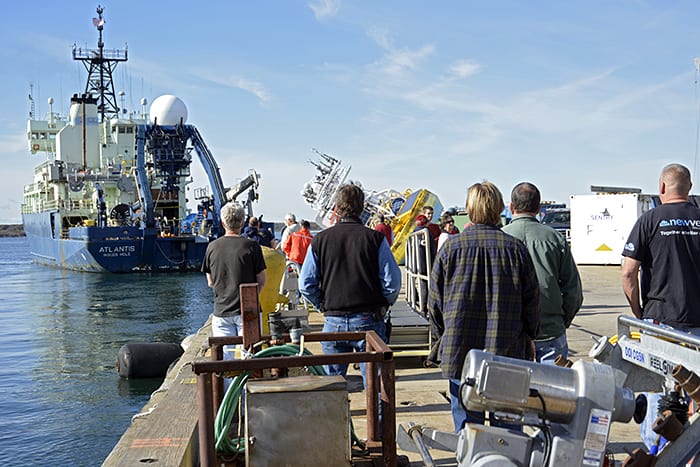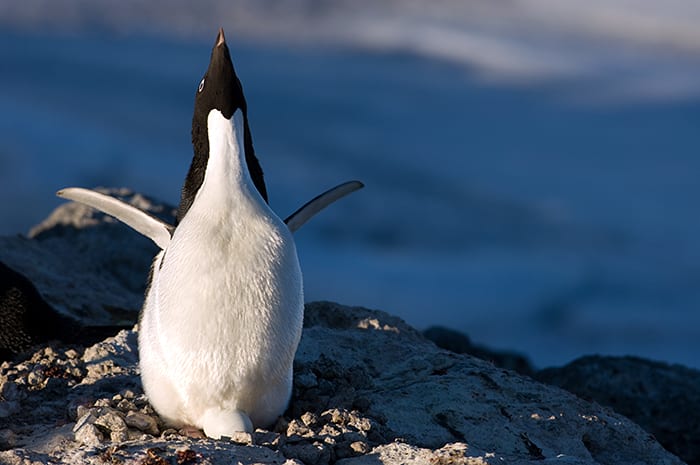Multimedia
Life on Seamounts
Microbial Life
Doors Closing
Gates in the Miraflores Lock of the Panama Canal close behind R/V Neil Armstrong as the ship passed from the Pacific to the Atlantic recently on its inaugural voyage. In one…
Read MoreClass In Session
WHOI engineer Marshall Swartz (right) instructs Louis Clement, a post-doctoral scientist at the Lamont-Doherty Earth Observatory, on the technical intricacies of a CTD rosette equipped with a lowered acoustic doppler current profiler (ADCP). The two were…
Read MoreOcean Robots: What is a Robot?
What exactly is an ocean robot and what do they do? Find out what they are and how they are helping explore the ocean in new and exciting ways.
Read MoreSampler for Shallow Seas
WHOI engineer Kaitlyn Tradd works on a new sampling system called SUPR-REMUS. The device consists of a multi-sampling Suspended Particulate Rosette sampler (SUPR) mounted on a REMUS autonomous underwater vehicle. A…
Read MoreOcean Robots: The Future of Marine Robotics
What exactly is an ocean robot and what do they do? Find out what they are and how they are helping explore the ocean in new and exciting ways.
Read MoreSerene Squid
Squid such as this Dortyteuthis pealeii are common prey for many fish, whales, and even humans. WHOI researchers have studied how whales use sonar to find squid, how humans might…
Read MoreOcean Robots: Mapping Salinity
Ocean salinity varies with the water cycle. Robots like gliders help map these changes with detailed, long-term measurements.
Read MoreOcean Robots: Sea Ice
Autonomous SeaBED vehicles map beneath sea ice, unlocking mysteries of this challenging and little-known ocean environment.
Read MoreOcean Robots: Underwater Volcano
In 2009, the remotely operated vehicle Jason recorded the first video and still images of a deep-sea volcano actively erupting molten lava on the seafloor.
Read MoreOcean Robots: Arctic Ocean
Robotic tools like the Ice-Tethered Profiler reveal what’s happening beneath Arctic ice, helping scientists track rapid changes in this fragile ocean region.
Read MoreOcean Robots: Open Ocean
The open ocean is immense, but thousands of robotic Argo floats help scientists map its depths and reveal hidden processes far from shore.
Read MoreOcean Robots: Air France Flight 447
To solve the mystery of Air France Flight 447, researchers turned to REMUS 6000 to search the rugged seafloor of the mid-ocean ridge.
Read MoreOcean Robots: Continental Shelfbreak
At the edge of the continental shelf, REMUS 100 explores a rich, dynamic marine ecosystem shaped by shifting ocean conditions.
Read MoreOcean Robots: Hydrocarbon Seeps
Natural seafloor oil seeps offer clues to how spills change over time—explored up close with vehicles like Sentry, Jason, and Alvin.
Read MoreOcean Robots: Challenger Deep
Reaching Challenger Deep takes a unique tool like Nereus—built to explore the ocean’s deepest trenches and unlock its hidden secrets.
Read MoreOcean Robots: Hydrothermal Vents
Since their 1977 discovery, hydrothermal vents have amazed scientists. Now, ocean robots are helping uncover new vent sites across the globe.
Read MoreGliders Explained
The “Ocean Institutes Science Fair” at the fall 2015 Board and Corporation meeting at WHOI featured displays describing research supported by the four WHOI Ocean Institutes. Here, scientist Robert Todd…
Read MoreWith Gratitude
Newly elected officers of the WHOI Board and Corporation presented Newt Merrill with a gift recognizing his eight years of service as chairman of the WHOI Board of Trustees. In…
Read MoreLife at Vents and Seeps
Shellfish
Sailing Into 2016
In a long-held tradition, WHOI personnel and well-wishers gather at the dock in Woods Hole to see off one of the ships the Institution operates as it departs on a research…
Read MoreHappy New Year
Happy New Year, to everyone from the Antarctic (where this Adelie penguin lives) to the Arctic and all points in between.(Photo by Chris Linder, Woods Hole Oceanographic Institution)
Read More
